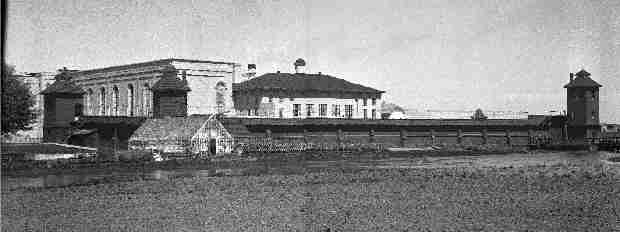Trial Service Year – P002
One Person’s Creepy is Another Person’s Cool
When I showed up for the interview, I wasn’t really expecting a tour of the facilities. I wasn’t really sure why the management at Oregon State Penitentiary (OSP) wanted to provide a tour before they actually hired any of us, but something my wife said did come to mind:
When I applied to be a Corrections Officer (CO), one of the first interviews I accepted was at OSP. It didn’t take long for me to realize that I would turn down any interview offers from OSP – the place gave me the creeps!
Creeps? It didn’t take me very long to realize what it was she was talking about. The original buildings of OSP were opened for inspection in October of 1872, and though the prison has been through many upgrades and improvements, the age and general disrepair of many parts of the prison show up early in the tour. Though I understood why it gave my wife the creeps, for me, applying some six years after she applied for the job, the prison’s age and the fact that it is Oregon’s only maximum security prison made it appealing for both employment and direct research. Additionally, I had already made a few friends that worked at OSP. More important, one of my uncles had also worked and retired from the prison. Some of his comments made the prospect of employment at Oregon’s oldest prison even more appealing.
The older a prison is, the more likely it is for the operations to stray from established policy and protocol. The reasons for this are probably obvious in some areas and not so obvious in other areas. One of the more obvious reasons is that architecture dictates many elements of security. The more modern a prison is, the more likely it is that the prison’s operational practices actually reflect both the state and departmental policies. One of the less obvious areas to those unfamiliar with trying to change ingrained operational procedures is the difficulty in obtaining complete stakeholder support for changes in policy and operational procedure. If that doesn’t seem clear, then just think of it this way:
You are a new hire attending New Employee Orientation (NEO), and you are trained to do a specific task in a very specific manner. You finish training and the first time you attempt to perform that specific task a senior employee makes it clear you are performing that task the wrong way. You politely explain what you learned in NEO, and the senior employee makes it clear that the NEO training isn’t worth paying attention to because “we’ve always done it THIS way.”
Having a military background – well, it sort of prepares you for this kind of thinking. It also prepares you for the fact that despite this practice, you will also run across very effective and organized leaders and supervisors that find yet another way of getting the job done.
For my wife, it was the age, mustiness, smell, peeling paint, asbestos, etc., that made OSP creepy. For me, those same things made my imagination wander – wondering what the place was like when it was closer to “new.”
Perhaps the “three hour tour” was simply a way to let one know the working and environmental conditions. My wife ultimately chose to accept a CO position at the brand new women’s facility. I turned down a few other offers in order to get hired at OSP. Another important reason for taking the position at OSP is simply that it is almost the same age as New York’s Sing Sing, and that makes for a better comparison to Ted Conover’s experiences in New Jack: Guarding Sing Sing. At any rate, the next installment of my trial service year is probably obvious… NEO training.


